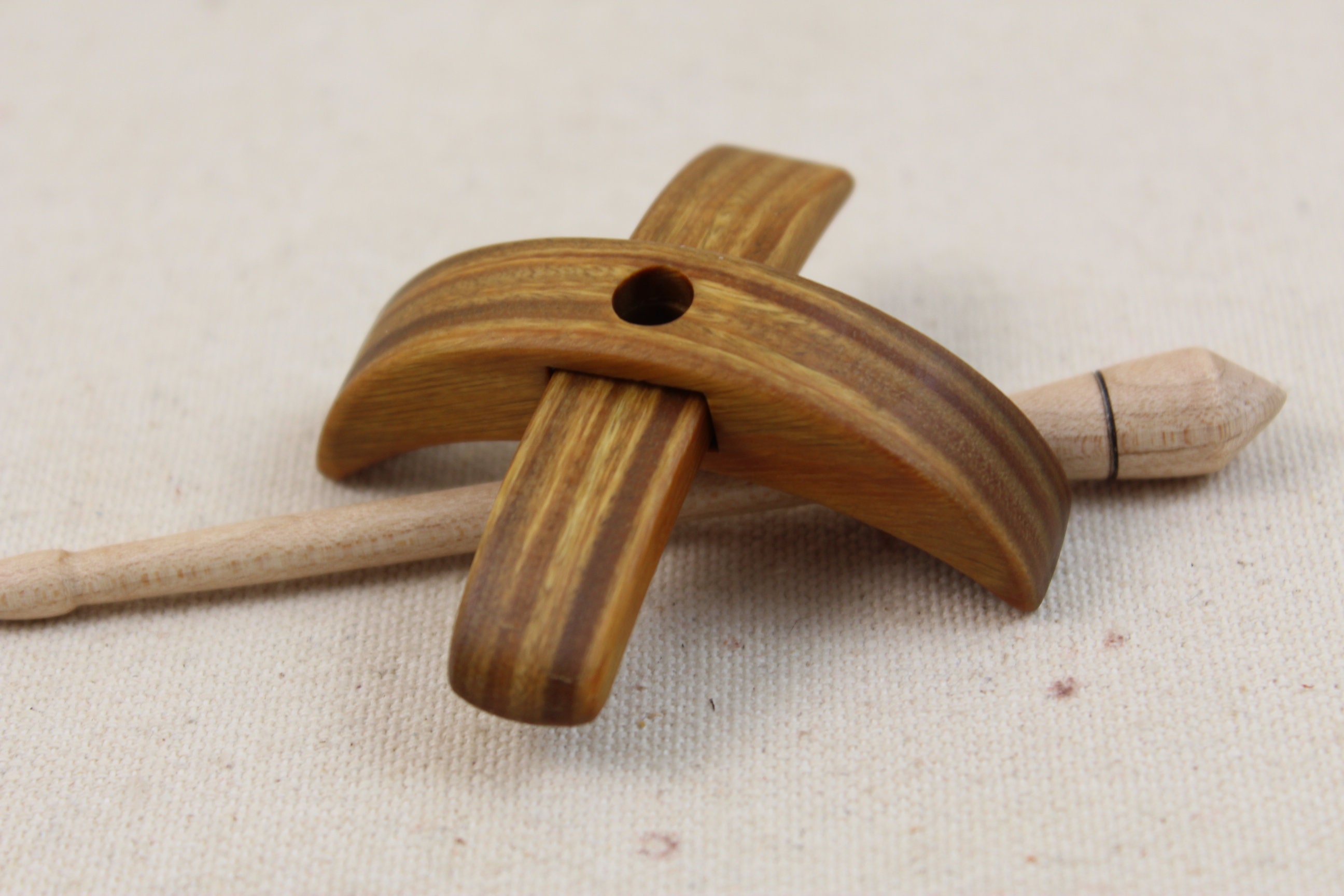

If there is no notch or hook, a half-hitch knot is used to secure the stored yarn. A low-whorl spindle may or may not have a hook, notch, or other device to assist with keeping the spun yarn secured to the spindle while you spin the next length. A heavy low-whorl spindle will spin better than a heavy high-whorl.

They tend to be forgiving of minor flaws in balance or shaping, so they’re easier to make. “Low-whorl spindles, with the weight at the bottom, have a low center of gravity and are more stable as a result.

The spindle should turn smoothly without a lot of wobble and continue to spin for some time,” says Maggie. A well-balanced spindle is a delight, so check to see how well yours spins-tie on some yarn and give it a clockwise twist. Don’t choose one that is too heavy, however, or you will learn why they are called drop spindles. Many beautiful lighter-weight spindles are available, but wait before you try one, because a medium-weight or heavier spindle will spin longer while you learn to draft out the fibers. “Your first drop spindle should weigh 2 to 3 ounces. Here are basic drop spindle spinning instructions from “Spindle Spinning” by Maggie Casey (from the Summer 2005 issue of Spin Off) and “High Whorl, Low Whorl” by Abby Franquemont (from the pages of the Spring 2009 issue of Spin Off) to help you get started: Choosing a Drop Spindle
DROP SPINDLE HOW TO
Two experts on spinning with a drop spindle, Maggie Casey and Abby Franquemont, have created great resources to help you learn how to handspin yarn and how to spin with a drop spindle in particular. If you don't find exactly what you want, or would like a spindle recommendation, please call the shop directly at 80 or contact us for assistance.Drop spindle spinning is a great way to make yarn. Swift and either ball winder or nostepinne

Some spindles are weighted at the top, middle or bottom of the rod by a whorl. A spindle is a straight rod, typically wooden, that is designed to twist, or spin, fiber into yarn.


 0 kommentar(er)
0 kommentar(er)
